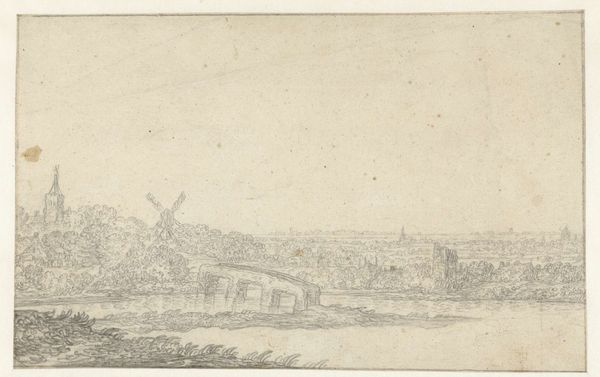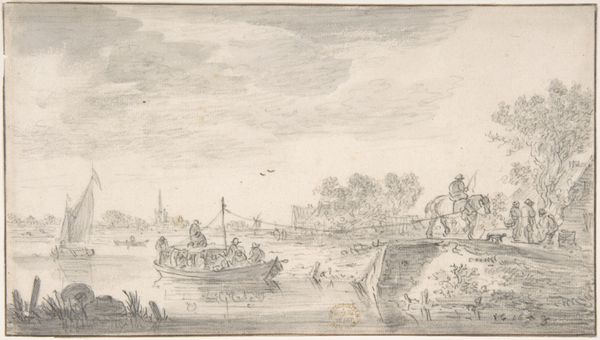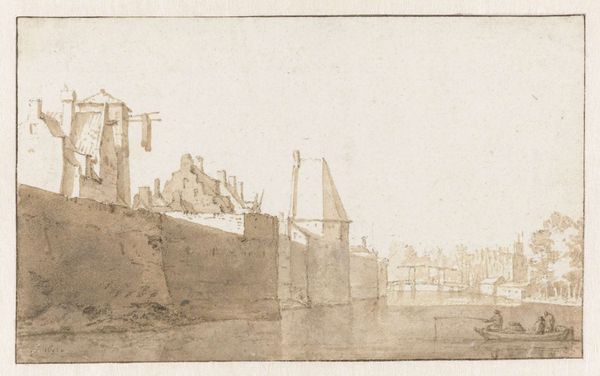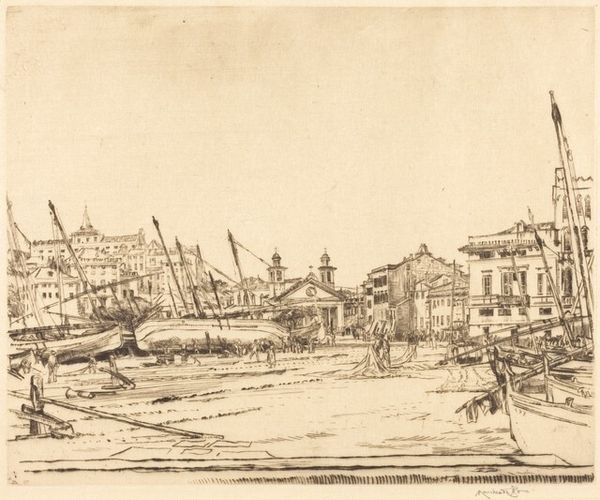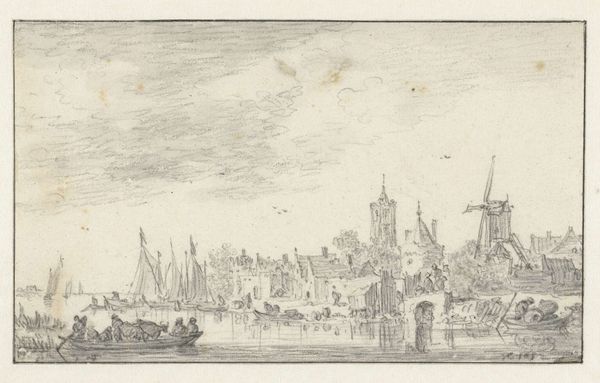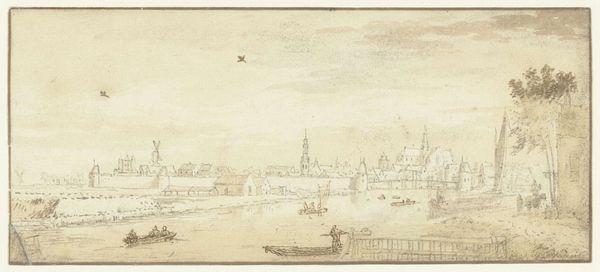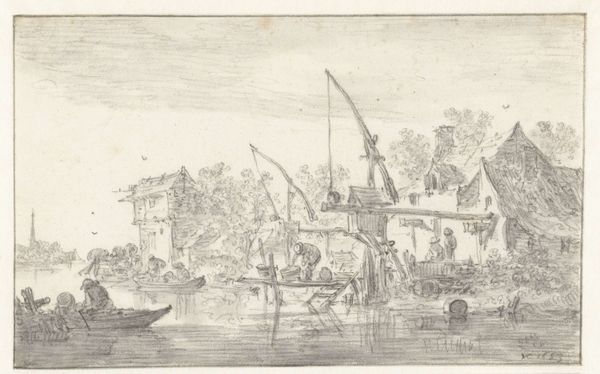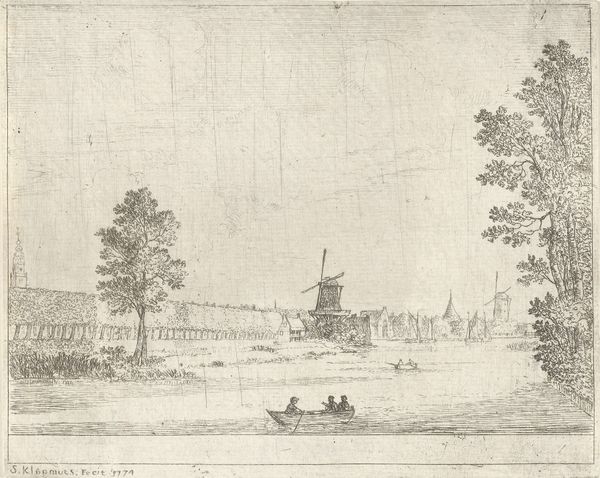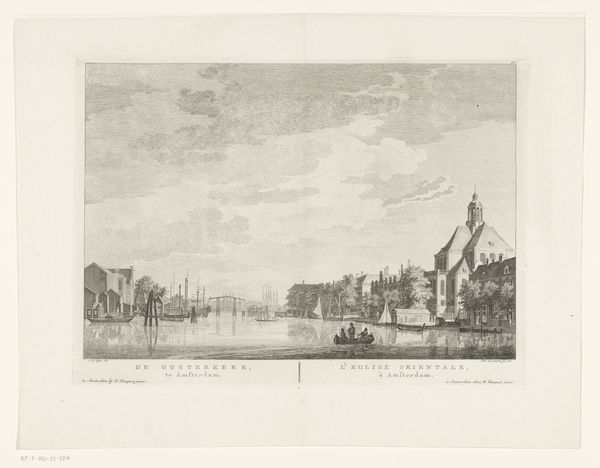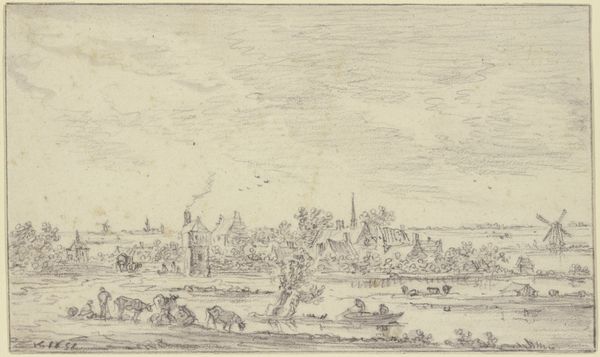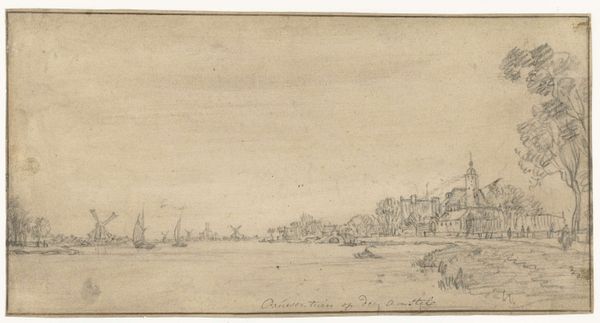
drawing, pencil
#
drawing
#
dutch-golden-age
#
landscape
#
pencil
#
cityscape
Dimensions: height 402 mm, width 649 mm
Copyright: Rijks Museum: Open Domain
Editor: This is Anthonie Waterloo's "Derde Heiligewegspoort te Amsterdam," a pencil drawing made sometime between 1636 and 1664. I find the composition quite striking; it's meticulously detailed despite the relatively muted tones. What do you see in this piece from a formalist perspective? Curator: The most compelling aspect is the arrangement of space and form. Notice the precise lines used to depict the architectural elements. The bridge, the gate, and the surrounding buildings create a layered composition, moving from foreground to background with measured clarity. The tonal variations, though subtle, provide depth and volume to these structures. Editor: Yes, the bridge really pulls the eye in, doesn't it? The textures, though created solely with pencil, really give it a tangible quality. Is that something you find particularly noteworthy? Curator: Absolutely. The artist’s manipulation of the pencil generates various textures, differentiating water from stone, foliage from wood. This attention to surface is paramount. Observe also how the drawing adheres to structuralist principles: binary oppositions are set through shadow and light, straight and organic forms, contributing to the overall unity and visual harmony of the work. Editor: It’s amazing how much detail is conveyed with so few shades. It almost feels like an architectural rendering, but with the softness of a landscape sketch. Curator: Precisely. Waterloo utilizes line and form to meticulously construct space, creating a balanced and complete composition, typical of formalist approaches to art. Editor: I see it now! Analyzing the intrinsic forms and structures illuminates the beauty of Waterloo's "Derde Heiligewegspoort te Amsterdam". Curator: Indeed, understanding form is to truly understand art.
Comments
No comments
Be the first to comment and join the conversation on the ultimate creative platform.
